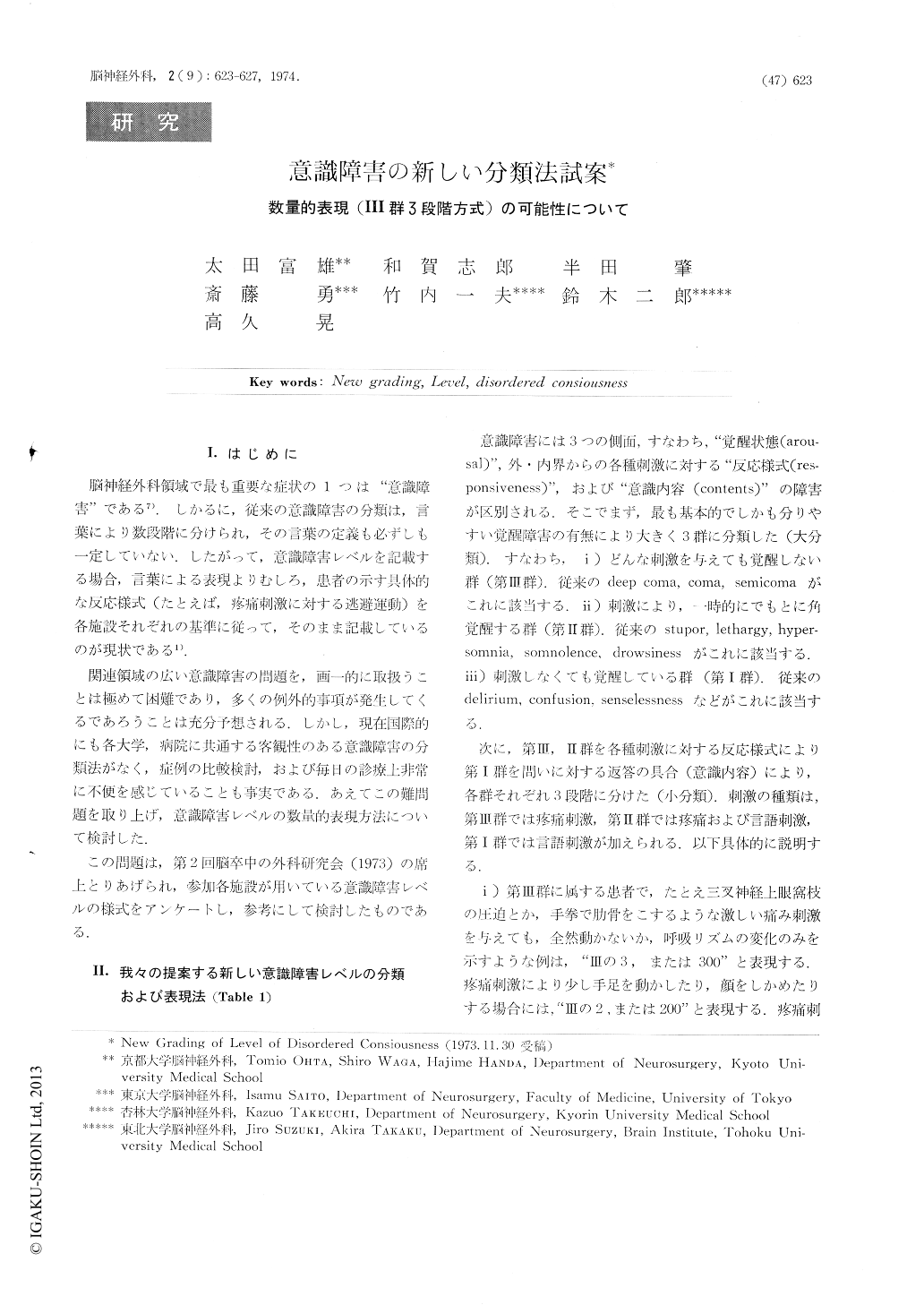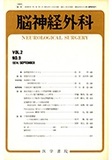Japanese
English
- 有料閲覧
- Abstract 文献概要
- 1ページ目 Look Inside
Ⅰ.はじめに
脳神経外科領域で最も重要な症状の1つは"意識障害"である7).しかるに,従来の意識障害の分類は,言葉により数段階に分けられ,その言葉の定義も必ずしも一定していない.したがって,意識障害レベルを記載する場合,言葉による表現よりむしろ,患者の示す具体的な反応様式(たとえば,疼痛刺激に対する逃避運動)を各施設それぞれの基準に従って,そのまま記載しているのが現状である1).
関連領城の広い意識障害の問題を,画一的に取扱うことは極めて困難であり,多くの例外的事項が発生してくるであろうことは充分予想される.しかし,現在国際的にも各大学,病院に兵通する客観性のある意識障害の分類法がなく,症例の比較検討,および毎日の診療上非常に不便を感じていることも事実である,あえてこの難問題を取り上げ,意識障害レベルの数量的表現方法について検討した.
Level of disordered consciousness, so far, has been classified by using a set of technical terms such as coma, stupor, somnolence, confusion and so on. However, the definition of such terms has a different nuance from one clinic to another, and this made the comparison of the data on the same topics incomplete and incorrect. Because of this, it is true in most neurosurgical clinics in Japan that the severity of disordered consciousness has long been described with grades of the responsiveness to different stimuli laden to the patients.

Copyright © 1974, Igaku-Shoin Ltd. All rights reserved.


